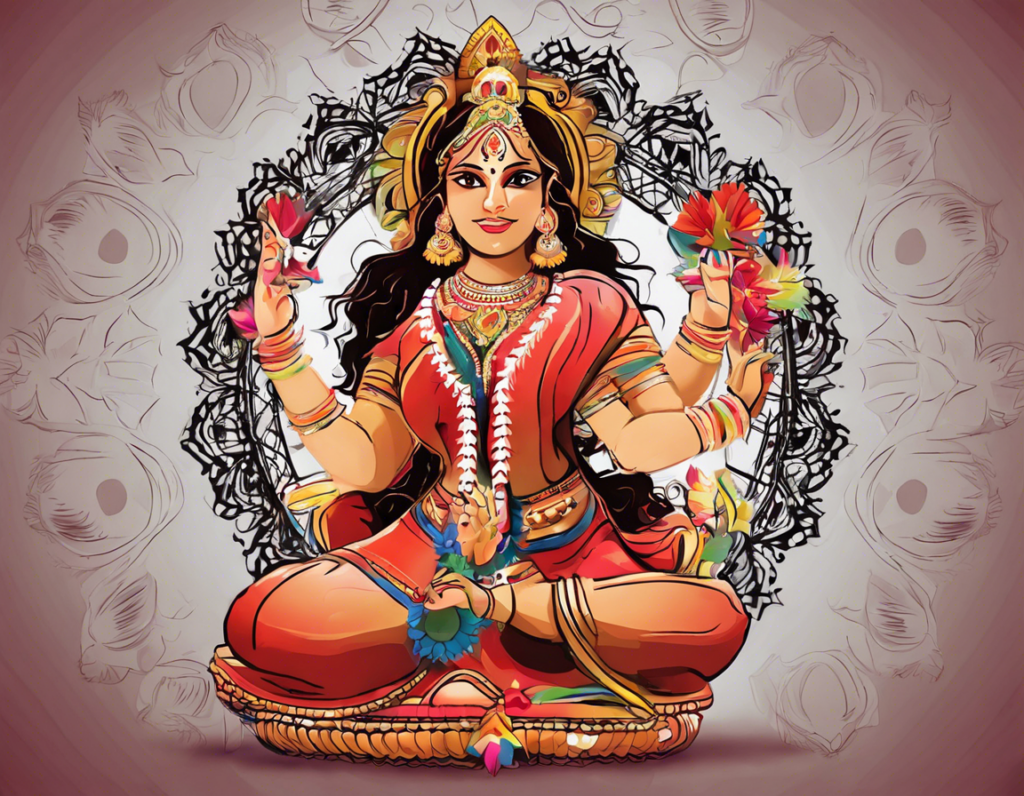Navratri, a vibrant and auspicious festival celebrated across India, holds immense significance in Hindu culture. Derived from the Sanskrit words “Nav” (nine) and “Ratri” (night), Navratri spans over nine nights and ten days in honor of the divine feminine energy known as Goddess Durga. The festival typically occurs twice a year, once in the spring season and again in the autumn season. In 2024, the spring Navratri will take place in April, marking a time of joy, spirituality, and cultural richness for millions of devotees worldwide.
The Origins and Significance of Navratri
The origins of Navratri trace back to ancient legends and mythologies. According to Hindu scriptures, Goddess Durga embodies the combined energies of various gods to combat the demon Mahishasura and restore peace and harmony. The nine nights of Navratri each symbolize a different form of the Goddess, highlighting her diverse attributes such as strength, wisdom, and compassion. Devotees perform rituals, prayers, and fasting during this period to invoke the blessings of the Goddess and seek her protection against evil forces.
Rituals and Traditions During Navratri
- Golu Display: In South India, families create elaborate displays of dolls and figurines depicting mythological scenes during Navratri.
- Garba and Dandiya Raas: In states like Gujarat and Maharashtra, energetic folk dances like Garba and Dandiya Raas are performed in community gatherings.
- Fasting and Feasting: Many devotees observe fasts during Navratri, consuming only specific foods like fruits, nuts, and milk. Feasting on special dishes like sabudana khichdi and kuttu ki puri is also a common tradition.
- Kanya Pujan: On the eighth or ninth day of Navratri, young girls representing the power of Goddess Durga are worshipped as part of Kanya Pujan.
Celebrating Navratri in 2024
As Navratri 2024 approaches in April, devotees eagerly anticipate the festivities with fervor and enthusiasm. In addition to traditional rituals, modern celebrations often include cultural programs, music and dance performances, and community events. Temples and spiritual centers organize special prayers, homams, and discourses, attracting devotees seeking spiritual upliftment and divine blessings.
Navratri Across Regions
Navratri is celebrated with unique regional flavors and customs in different parts of India:
– Gujarat and Maharashtra: Garba and Dandiya Raas are the main highlights, with vibrant traditional attire and rhythmic music setting the festive mood.
– West Bengal: Known as Durga Puja, this grand celebration involves elaborate pandal decorations, cultural events, and immersion of Durga idols in water bodies.
– Punjab: In Punjab, Navratri is synonymous with Gidda and Bhangra performances, showcasing the lively spirit of the festival.
Significance of Colors During Navratri
Each day of Navratri is associated with a specific color that holds symbolic value:
– Day 1 (Pratipada): Grey color signifies the beginning of the festival.
– Day 2 (Dwitiya): Orange color symbolizes energy and happiness.
– Day 3 (Tritiya): White color represents peace and purity.
– Day 4 (Chaturthi): Red color signifies strength and power.
– Day 5 (Panchami): Royal Blue color symbolizes calmness and serenity.
– Day 6 (Sashti): Yellow color represents brightness and optimism.
– Day 7 (Saptami): Green color symbolizes growth and harmony.
– Day 8 (Ashtami): Peacock Green color signifies beauty and grace.
– Day 9 (Navami): Purple color represents luxury and royalty.
FAQs About Navratri 2024
1. When is Navratri 2024 taking place in April?
Navratri 2024 is set to begin on Sunday, 14th April and conclude on Monday, 22nd April.
2. How can I participate in Navratri celebrations if I’m not in India?
You can join virtual celebrations, visit local temples, or connect with Indian communities to experience the essence of Navratri.
3. Are there any specific prayers or mantras recited during Navratri?
Devotees often chant the Durga Chalisa, Devi Mahatmyam, and other sacred texts dedicated to Goddess Durga during Navratri.
4. What are the traditional foods consumed during Navratri fasting?
Foods like sabudana khichdi, kuttu ki puri, fruits, milk, and specific vegetables are common during Navratri fasting.
5. Is Navratri only celebrated by Hindus?
While Navratri is a Hindu festival, people from various cultural backgrounds and religions participate in the celebrations to experience the rich traditions and spirituality associated with it.
Navratri in April 2024 promises to be a time of devotion, joy, and cultural immersion for millions of people around the world. Whether you partake in the rhythmic Garba dances, observe fasting rituals, or simply bask in the vibrant colors and festivities, Navratri offers a profound spiritual experience that unites communities and celebrates the divine feminine in all her glory.
